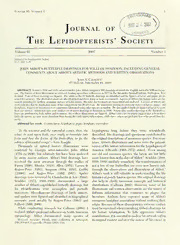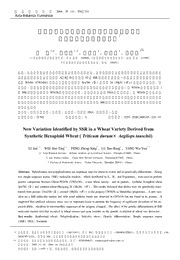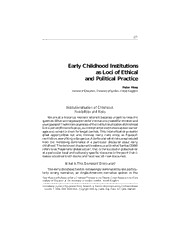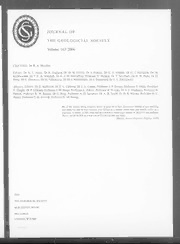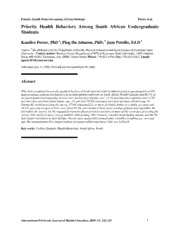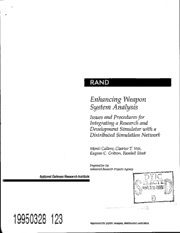
DTIC ADA292583: Enhancing Weapon System Analysis: Issues and Procedures for Integrating a Research and Development Simulator with a Distributed Simulation Network. PDF
Preview DTIC ADA292583: Enhancing Weapon System Analysis: Issues and Procedures for Integrating a Research and Development Simulator with a Distributed Simulation Network.
RAND Enhancing Weapon System Analysis Issues and Procedures for Integrating a Research and Development Simulator with a Distributed Simulation Network Monti Callero, Clairice T. Veit, Eugene C. Gritton, Randall Steeb Prepared for the Advanced Research Projects Agency National Defense Research Institute 19950328123 Approved for public release; distribution unlimited Form Approved REPORT DOCUMENTATION PAGE OMB No. 0704-0188 Public reporting burden for the collection of information is estimated to average 1 hour per response, including the time for reviewing instructions, searching existing data sources, gathering and maintaining the data needed, and completing and reviewing the collection of information. Send comments regarding this burden estimate or any other aspect of this collection of information, including suggestions for reducing this burden, to Washington Headquarters Services, Directorate for Information Operations and Reports, 1215 Jefferson Davis Highway, Suite 1204, Arlington, VA 22202-4302, and to the Office of Management and Budget, Paperwork Reduction Project (0704-0168), Washington, DC 20503 1. AGENCY USE ONLY (Leave blank, 2. REPORT DATE 1994 TECHNICAL REPORT 4. TITLE AND SUBTITLE 5. FUNDING NUMBERS ENHANCING WEAPON SYSTEM ANALYSIS ISSUES AND PROCEDURES FOR INTEGRATING A RESEARCH AND DEVELOP- MENT SIMULATOR WITH A DISTRIBUTED SIMULATION NETWO Callero Monti, Veit Clairice T.,Gritton Eugene C. Steeb Randall 7. PERFORMING ORGANIZATION NAME(S) AND ADDRESS(ES) 8. PERFORMING ORGANIZATION REPORT NUMBER RAND DSRS U 35253 NATIONAL DEFENSE RESEARCH INSTITUTE 9. SPONSORING/MONITORING AGENCY NAME(S) AND ADDRESS(ES) 10. SPONSORING/MONITORING AGENCY REPORT NUMBER ADVANCE RESEARCH PROJECT AGENCY MDA90390C0004 3701 FAIRFAX DRIVE ARLINGTON, VA 2203 11. SUPPLEMENTARY NOTES 12a. DISTRIBUTION/AVAILABILITY STATEMENT 12b. DISTRIBUTION CODE APPROVED FOR PUBLIC RELEASE DISTRIBUTION UNLIMITED 13. ABSTRACT (Maximum 200 words) THIS REPORT ADDRESSES THE FEASIBILITY OF APPLYING SIMULATOR NETWORK TECHNOLOGY TO WEAPON SYSTEM ANALYSIS IN SUPPORT OF THE WEAPON SYSTEM DEVELOPMENT AND ACQUISITION PROCESS. THE REPORT SHOULD BE OF INTEREST TO PERSONNEL IN THE MILITARY SERVICES AND DEFENSE OFFICES AND AGENCIES INVOLVED IN THE WEAPON SYSTEM DEVELOPMENT AND ACQUISITION PROCESS AND IN MODELING AND SIMULATION ACTIVITIES. 14. SUBJECT TERMS 15. NUMBER OF PAGES weapon 22 simulation 16. PRICE CODE 17. SECURITY CLASSIFICATION 18. SECURITY CLASSIFICATION 19. SECURITY CLASSIFICATION 20. LIMITATION OF ABSTRACT OF REPORT OF THIS PAGE OF ABSTRACT SAR SAR NSN 7540-01-280-5500 Standard Form 298 (Rev. 2-89) Prescribed by ANSI Std. Z39-18 298-102 Preface This is the final report of a project conducted for the Advanced Research Projects Agency that addressed the feasibility of applying simulator network technology to weapon system analysis in support of the weapon system development and acquisition process. The research was carried out in the Applied Science and Technology Program within RAND's National Defense Research Institute, a federally funded research and development center sponsored by the Office of the Secretary of Defense and the Joint Staff. The report should be of interest to personnel in the military services and defense offices and agencies involved in the weapon system development and acquisition process and in modeling and simulation activities. Äö cession FOE" -r- D"IC TAB Q Unex..ne traced Q Ju s t i i i a a t i oau^™*»™ L^il^o-/ i_AvniXaMIit.Tr Ca&r>B '-.] fr Contents Preface üi Figures vii Tables ix Summary xi Acknowledgments xxi 1. INTRODUCTION 1 The Weapon System Development and Acquisition Process 1 The Analytical Situation 2 Focus of This Report 4 2. MODELING AND SIMULATION ISSUES AND OPPORTUNITIES ... 6 Analysis Features Important to Weapon System Analysis 6 Operational Analysis Scope 6 The Critical Issue of Credibility 8 Simulator Networking 9 The SIMNET System 9 Advantages and Limitations of the Current SIMNET System 10 A High-Fidelity Weapon System Simulator for SIMNET Integration 11 Crew Station Research and Development Facility 12 Mixed-Fidelity Simulations for Weapon System Analysis 13 Analysis Potential from an Integrated High-Fidelity R&D Simulator and SIMNET Environment 14 3. MAJOR TECHNICAL ISSUES IN THE INTEGRATION OF AVTB AND CSRDF 17 Coordination of Synchronous and Asynchronous Processing 17 Simulation Network Communication and Protocol Issues 18 Database Sharing and Correlation 20 Sensor Modeling and Visual Image Representation 20 Visual Image Correlation 21 Observations on Sensor and Visual Imaging 27 4. EVALUATING THE SIMNET/CSRDF INTEGRATED PRODUCT 28 Overview 28 Internal Validity Issues Within SIMNET-Based Systems 29 Internal Validity Issues Between the CSRDF and AVTB 30 External Validity Issues 30 Calibrating a Simulation to a Selected Standard 31 Validation Procedures 32 Pretest Procedures 33 Validity Tests for Simulation Outcomes 35 A Validity Test for Two Sensor Systems 37 Validity Checks 41 Comments 42 Validating Human Judgment Inputs to Simulations 43 Decision or Judgment Models 47 Perceptions of SIMNET/CSRDF Database Objects 47 Assessing the Importance of Observed Inconsistencies 48 Concluding Remarks 48 5. PROOF-OF-PRINCIPLE DEMONSTRATION 49 Connectivity 50 Database Interchange 51 Database Interchange Activity 52 Coordination of CIG Overload Management Algorithms 52 AVTB Fidelity Enhancements 53 Sensor and Visual Images 53 Semi-Automated Forces . . . . 54 Proof-of-Principle Activity Sequence 55 6. CONCLUSIONS 57 Appendix A. THE WEAPON SYSTEM DEVELOPMENT AND ACQUISITION PROCESS 59 B. SIMNET 63 C. CREW STATION RESEARCH AND DEVELOPMENT FACILITY 71 Bibliography 77 Figures 2.1. AirLand Battle Weapon System Analysis 7 2.2. Elements of Weapon System Analysis 8 2.3. Weapon System Analysis Potential with SIMNET/CSRDF 15 3.1. CSRDF Bridge Processor Data Interface 19 3.2. CIG Sensor Functional Block Diagram 25 4.1. Validation Schema 36 4.2. Experimental Design for Consistency/Validity Test for Two Sensor Systems 38 4.3. Hypothetical Data for Design Shown in Figure 4.2 39 4.4. Receiver Operator Curves for Data Shown in Figure 4.3 40 4.5. A 5 x 4 (X x Y) Factorial Design That Generates 20 Situations for Judgment 44 4.6. Graphic Analyses of Hypothetical Data (Decisions) 45 5.1. Proof-of-Principle Activities 56 Cl. CSRDF Architecture 72 Tables 5.1. Potential Analysis Enhancements xiii 5.2. Potential Contribution to Operational Test and Evaluation xiv 1.1. Weapon System Acquisition Process 2 2.1. Potential Analysis Enhancements 15 2.2. Potential Contribution to Operational Test and Evaluation 16 B.l. SIMNET Protocols 66 Summary In this report we propose that operational effectiveness analyses supporting the weapon system development and acquisition process would be enhanced by properly integrating highly realistic, human-operated research and development simulators of the emerging system with distributed interactive simulation (DIS) networks that provide large-scale, human-in-the-loop battlefield environments. We further propose and describe how to approach an initial integration that would both serve as a proof-of-principle experiment and provide intellectual, hardware, and software "tool kits" for future integrations. Our approach emphasizes aspects of simulator integration such as fidelity, validation, correlation, and calibration that are critical to weapon system analyses but are not being undertaken in current efforts to create DIS environments simply through communication interfaces of disparate simulators with SIMNET-based systems. For this proof-of-principle demonstration, we recommend integration of the Crew Station Research and Development Facility (CSDRF) rotorcraft simulator operated by the Army and NASA with a fidelity-enhanced version of the Army Aviation Test Bed (AVTB) that incorporates the SIMNET-based simulator networking technology developed by the Advanced Research Projects Agency (ARPA). We discuss what such an integration could contribute, describe what we believe to be a feasible approach for integrating the two systems, and discuss the important technical and validation issues associated with such an integration, including the requirement to improve the fidelity of many existing AVTB/SIMNET features. Our main interest in this research stems from the proposition that the weapon system development and acquisition process should have solid analytical support from beginning to end so that, to the degree possible, design decisions to maximize operational effectiveness with minimum cost are made well before the item is actually built. The analytical methods currently available lack important features for assessing the capabilities of future weapon systems in battlefield operations. Three primary analytical methods are now used to evaluate new weapon systems—computer simulations, research and development simulators, and live operational tests and evaluations. Each of them has important constraints in its ability to properly represent weapon systems' operations in expected combat environments. For example, representations of human behavior (e.g., decisionmaking, operator actions) are notably poor in computer simulations of combat, the primary tool used in most weapon system analyses; human-operated research and development (R&D) simulators have limited representations of combat environments; and live operational tests and evaluations feature constrained operations in limited combat environments, at high costs. Better analytical tools and methods are needed to assess new weapon systems in large-scale combat operations that allow for human-in-the-loop participation in developing combat tactics and decisionmaking. We believe that such capabilities would lead to an enhanced capability for weapon system effectiveness analyses supporting the development and acquisition process. Enhancement Through Simulator Networking An important advancement relevant to these needs has been made in simulator networking. ARPA and the Army developed a simulator network featuring distributed processing techniques that allow human-operated simulators and automated (or semi-automated) weapon system simulations to interact on a single simulated battlefield. The system, called SIMNET,1 has several unique features that would enhance weapon system analyses. Each SIMNET battlefield element (e.g., tank, aircraft, command and control node) is computationally self- sufficient; hence, there is no technical limit on the number and type of interacting human-operated weapon system simulators and automated systems. This, along with semi-automated, unmanned weapon system simulations, allows for large- scale battlefield environments to be created in which to perform analysis. SIMNET includes an extensive set of analytic tools, including a "stealth" vehicle that can observe the battle from various points (e.g., looking out the windscreen of the cockpit of an aircraft) and that has a complete playback capability for all or part of the simulation. Simulator networking appears to have a large potential for providing a basis to resolve many of the critical deficiencies found in current weapon system analysis methods. However, we have found that simulator networking as currently represented by existing SIMNET systems will require considerable improvements to achieve the required level of capability, particularly in the area ^SIMNET and SIMNET derivatives remain the only functional implementations of simulation networking and provide the foundation for the extensive concept and technological development activities in distributed interactive simulation currently under way within the defense modeling and simulation community. For simplicity, we use the term SIMNET without deprecation to other named Xlll of weapon system simulation fidelity.2 Meanwhile, defense industries and the military service laboratories now routinely develop high-fidelity R&D simulators to test design concepts, investigate human/system interfaces, and conduct other research and development activities on specific emerging weapon systems. The concept addressed here is to combine the high-fidelity representation of a developing system afforded by its R&D simulator with the combat simulation environment afforded by SIMNET, thereby mutually complementing their individual strengths and weaknesses. The integrated system should provide an improved capability over current computer simulations to conduct weapon system operational effectiveness analysis. With fully human-operated or mixed human-operated and automated forces on the battlefield and employing real-time command and control, the enhancements could include those shown in Table S.l. These enhancements would make possible both a more complete and a more credible analysis of the weapon system and do it in a more realistic combat environment, featuring real- time interactions among combatants and the ability to evolve tactics and techniques throughout the course of the analysis. The contributions to operational test and evaluation (OT&E) shown in Table S.2 would follow from the ability to conduct pretest assessments with the improved simulation system to identify the most important areas to investigate, determine Table S.l Potential Analysis Enhancements Environment Current SIMNET/R&D Tactics Specified, adjusted Evolved during analysis Vehicle Coarse dynamics Crew interaction Sensor models Varying fidelity, notional Varying fidelity, crew operability operability Terrain Contours only Contours, foliage, and culture Threat Variable fidelity, notional Variable fidelity, crew operability operability Vulnerability Engineering estimates Engineering estimates Weapon effects Flyout/statistical Flyout/statistical Combat interactions Stylized Real-time, human-in-the-loop 2The term fidelity refers to logical and physical misrepresentations or "correct" representations of a simulation's modeling process (the simulation's apparent faithfulness to reality), determined through close scrutiny of that process.
The list of books you might like

Do Epic Shit

Corrupt (Devil's Night #1)

The Mountain Is You

The Spanish Love Deception

Commentary on Ephesians, Volume 1 of 2

Opere. Gli archetipi e l'inconscio collettivo
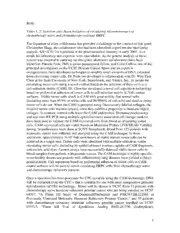
DTIC ADA453368: Gene Expression Analysis of Circulating Hormone Refractory Prostate Cancer
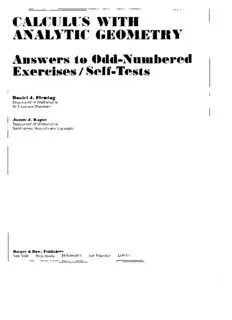
Calculus with analytic geometry
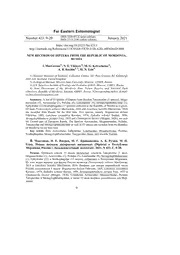
New records of Diptera from the Republic of Mordovia, Russia
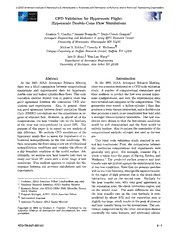
DTIC ADA455442: CFD Validation for Hypersonic Flight: Hypersonic Double-Cone Flow Simulations
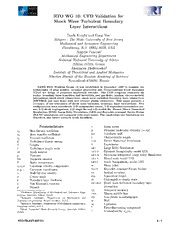
DTIC ADA455440: RTO WG 10: CFD Validation for Shock Wave Turbulent Boundary Layer Interactions
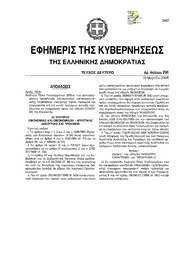
Greek Government Gazette: Part 2, 2006 no. 291

Kickin' It (Red Card)

The Brooklyn Paper Volume 29 Issue 48

DTIC ADA483967: Who's in Charge? New Challenges in Homeland Defense and Homeland Security
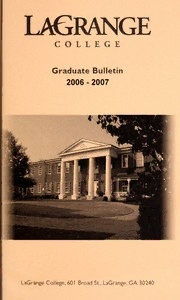
Graduate Bulletin 2006-2007, LaGrange College, LaGrange, Georgia
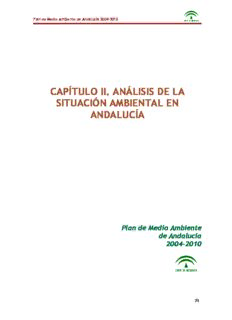
capítulo ii. análisis de la situación ambiental en andalucía

